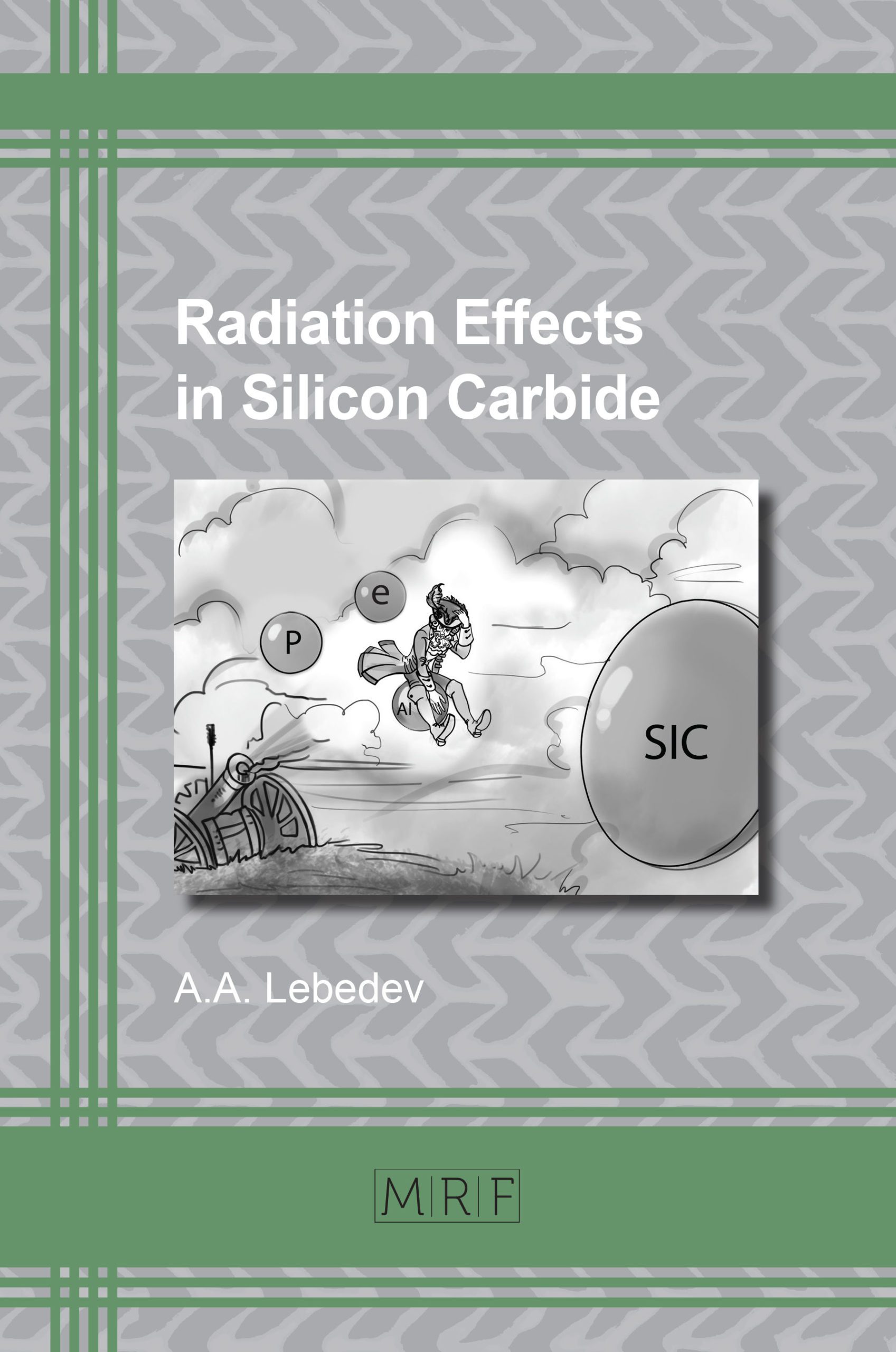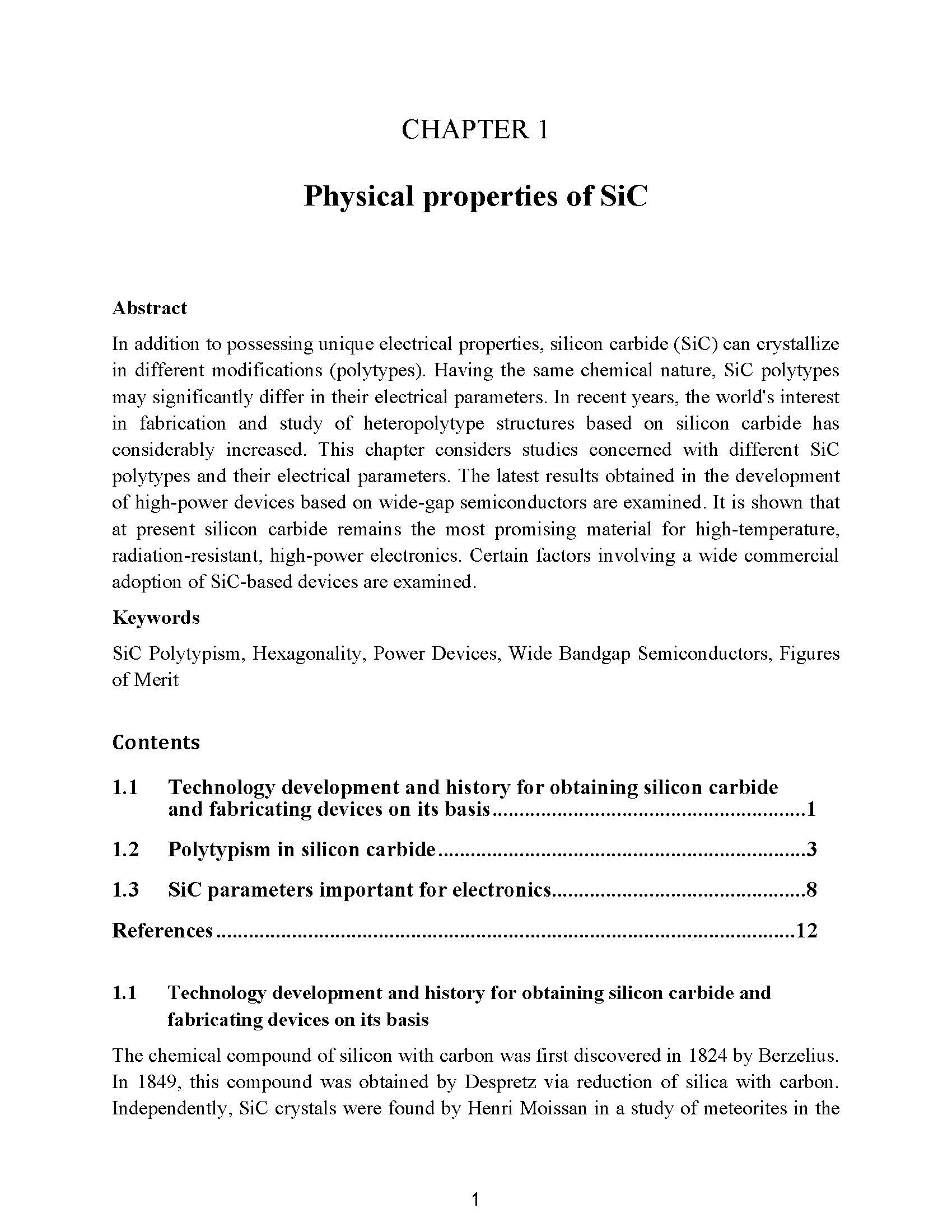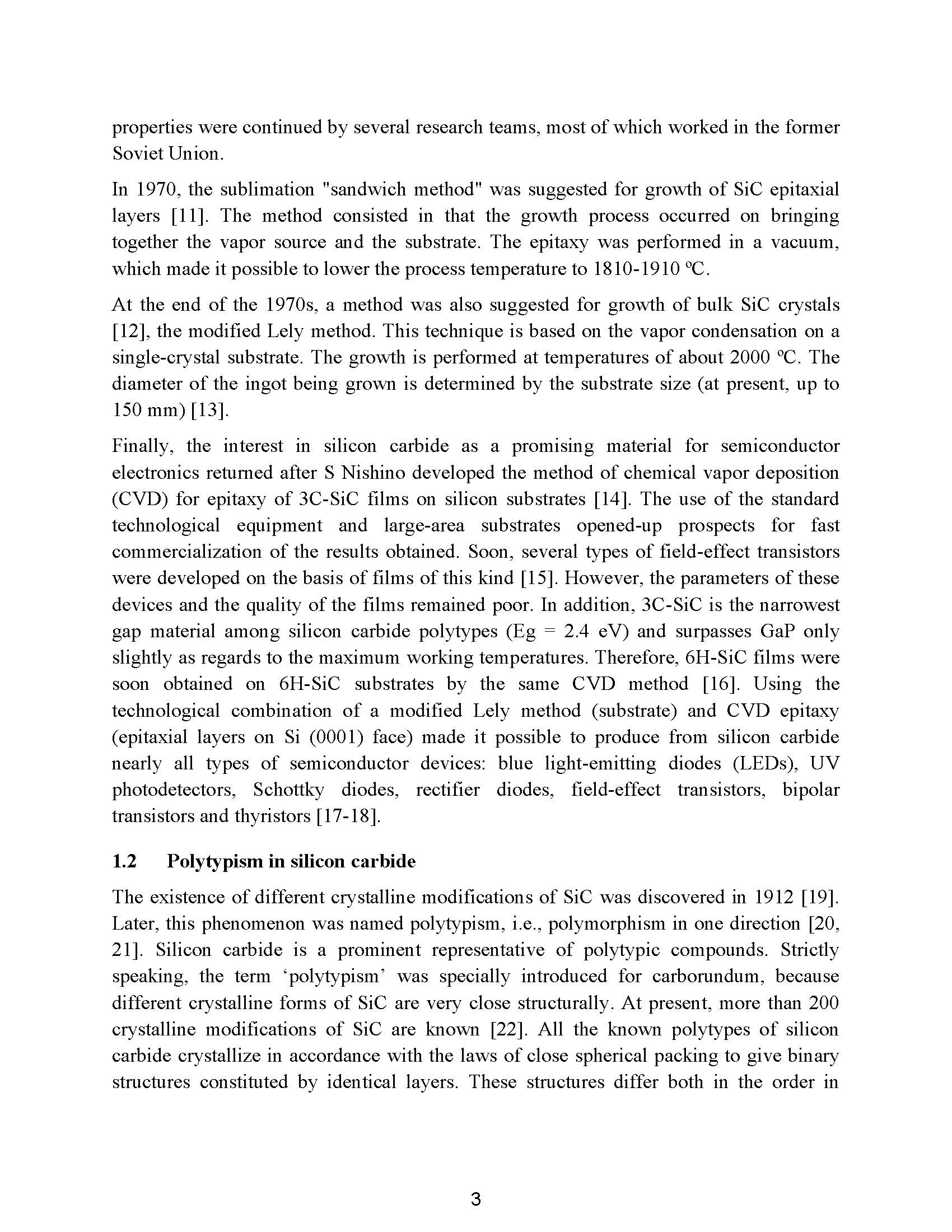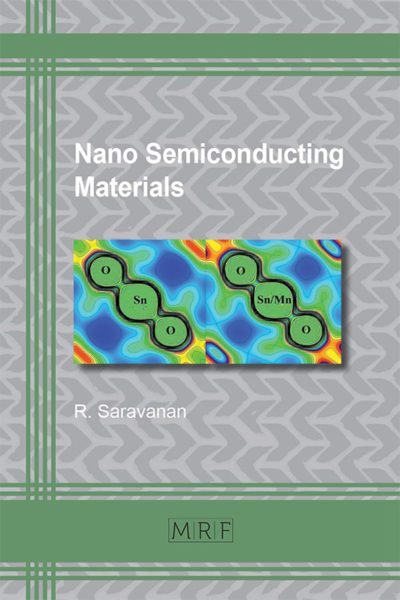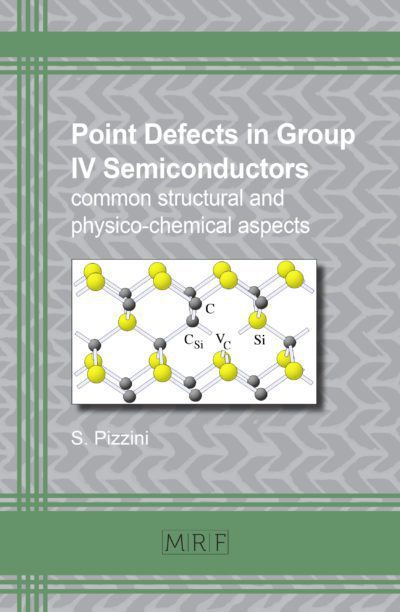Radiation Effects in Silicon Carbide
A.A. Lebedev
Materials Research Foundations Volume 6
Publication Date 2017, 171 Pages
Print ISBN 978-1-945291-10-4
ePDF ISBN 978-1-945291-11-1
DOI: 10.21741/9781945291111
The book reviews the most interesting research concerning the radiation defects formed in 6H-, 4H-, and 3C-SiC under irradiation with electrons, neutrons, and some kinds of ions. The electrical parameters that make SiC a promising material for applications in modern electronics are discussed in detail.
Specific features of the crystal structure of SiC are considered. It is shown that, when wide-bandgap semiconductors are studied, it is necessary to take into account the temperature dependence of the carrier removal rate, which is a standard parameter for determining the radiation hardness of semiconductors. The carrier removal rate values obtained by irradiation of various SiC polytypes with n- and p-type conductivity are analyzed in relation to the type and energy of the irradiating particles. The influence exerted by the energy of charged particles on how radiation defects are formed and conductivity is compensated in semiconductors under irradiation is analyzed.
Furthermore, the possibility to produce controlled transformation of silicon carbide polytype is considered. The involvement of radiation defects in radiative and nonradiative recombination processes in SiC is analyzed.
Data are also presented regarding the degradation of particular SiC electronic devices under the influence of radiation and a conclusion is made regarding the radiation resistance of SiC. Lastly, the radiation hardness of devices based on silicon and silicon carbide are compared.
Keywords
Silicon Carbide, Irradiation, Protons, Electrons, Compensation, Defects, Carrier Recombination, Annealing, Detectors
Table of Contents
Chapter 1: Physical properties of SiC 1
1.1 Technology development and history for obtaining silicon carbide and fabricating devices on its basis 1
1.2 Polytypism in silicon carbide 3
1.3 SiC parameters important for electronics 8
References 12
Chapter 2: Compensation of silicon carbide under irradiation 17
2.1 Threshold energy of defect formation. 18
2.2 Temperature dependence of the carrier removal rate 20
2.3 Dependence of ηe on the measurement procedure 24
2.4 Experimental data obtained in determining the value of ηe 26
2.5 Compensation mechanism in SiC 30
2.5.1 Model 31
2.5.2 Comparison with experiment 35
2.6 Radiation doping 39
2.7 Effect of high irradiation doses 41
2.8 Effect of the energy of recoil atoms on conductivity compensation in moderately doped n-Si and n-SiC under irradiation with MeV electrons and protons 44
2.8.1 Introduction 44
2.8.2 Generation of primary radiation defects under electron irradiation 45
2.8.3 Formation of secondary radiation defects 46
2.8.4 Comparison with experiment 50
Conclusion 56
References 56
Chapter 3: Radiation defects in SiC and their influence on recombination processes 66
3.1 Introduction 67
3.2 Intrisic defects in silicon carbide 68
3.2.1 Centers in the lower half of the energy gap 68
3.2.2 Defects in the upper half of the energy gap 71
3.3 Radiation doping of SiC 77
3.3.1 Electrons 77
3.3.2 Neutrons 79
3.3.3 Alpha – particles 80
3.3.4 Protons 80
3.3.5 Ion implantation 84
3.5 Radiation – stimulated photoluminescence in SiC 90
3.5.1 “Defect” photoluminescence 90
3.5.2 Restorian of SiC characteristics upon annealing 99
References 102
Chapter 4: Effect of irradiation on the properties of SiC and parameters of SiC – based devices 118
4.1 Change in parameters of SiC devices under irradiation 119
4.1.1 Schottky diodes 119
4.1.2 PN diodes 130
4.1.3 SiC field – effect transistors 132
4.2 Possible transformation of the SiC polytype under irradiation 134
4.2.1 Possible resons for the polytypism of SiC 134
4.2.2 Selected experimental results 137
4.3 Comparison of the radiation hardnesses of silicon and silicon carbide 141
4.3.1 Dependence of the radiation hardness on the functional purpose of a device 141
4.3.2 Effect of temperature on the radiation hardness 142
4.4 Conclusion 144
4.5 Acknowledgments 146
References 146
Keywords 157
About the author 159
ProtoView by Ringgold Clean Data
Lebedev (St. Petersburg Electrical Engineering University) summarizes available data on radiation effects formed in 6H-, 4H-, and 3C-Sic under irradiation with electrons, neutrons, and some kind of ions, and the effects of intrinsic defects and radiation defects in the SiC crystal lattice on the properties of the epitaxial layers themselves, such as their doping level and polytype homogeneity. Investigations of wide-gap semiconductors take into account how the rate of removal of mobile charge carriers depends on the temperature. Annotation ©2017 Ringgold Inc. Portland, OR (protoview.com)
Ringgold Keywords
Silicon carbide, Radiation defects, SiC radiation, Electron irradiation, Neutron irradiation

